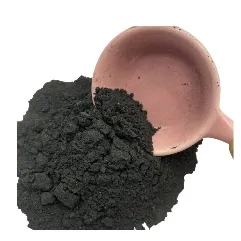
Iron Ore: Essential Raw Material Driving Global Steel Production
As the backbone of modern infrastructure, transportation, and industrial development, iron ore remains one of the most important and widely traded raw materials in the world. From skyscrapers to pipelines, railways to cars, steel — made from iron ore — is at the heart of it all.

Whether you’re a buyer searching for iron ore for sale, a trader exploring sourcing options, or a manufacturer comparing material specs, this guide offers clarity on different types of iron ore, leading iron ore companies, and how to navigate this critical commodity market.
What Is Iron Ore?
Iron ore is a naturally occurring mineral from which metallic iron (Fe) is extracted. The ore is mined, crushed, and processed before being used in blast furnaces or direct reduction units to produce steel.
Iron itself is the fourth most abundant element in Earth’s crust, and it exists primarily as iron oxides. But not all ores are created equal — and the grade, composition, and type matter significantly.
Different Types of Iron Ore
There are several types of iron ore, each with varying iron content, impurities, and industrial applications:
|
Type of Iron Ore |
Iron Content (Fe) |
Halaye |
|
Hematite (Fe₂O₃) |
58–70% |
High-grade, reddish in color, widely used in steelmaking |
|
Magnetite (Fe₃O₄) |
55–68% |
Magnetic, needs processing (beneficiation) before smelting |
|
Goethite (FeO(OH)) |
40–60% |
Found in lateritic soils, more common in tropical areas |
|
Limonite |
35–55% |
Hydrated iron oxide, less commonly used |
|
Siderite (FeCO₃) |
35–48% |
Rare, requires calcination before smelting |
|
Taconite |
~25–30% (low grade) |
Processed through pelletizing; major U.S. iron source |
The most valuable ores are those with high iron content and low impurities like silica, alumina, and phosphorus.
Global Iron Ore Market and Demand
Iron ore is primarily used to make steel — about 98% of all mined iron ore goes into steel production. As steel demand continues to rise in construction, automotive, and infrastructure sectors, the global iron ore trade remains strong.
Top importing countries:
China (largest consumer)
Japan
South Korea
Germany
India
Top exporting countries:
Australia (leading global exporter)
Brazil
South Africa
Canada
India
These countries dominate both the supply and logistics of iron ore for sale on global markets.
Leading Iron Ore Companies (Global Players)
Several iron ore companies dominate global production and supply chains. These include:
|
Company |
Country |
Notes |
|
Vale S.A. |
Brazil |
One of the world’s largest producers of iron ore and pellets |
|
Rio Tinto |
Australia |
Major exporter of high-grade Pilbara hematite |
|
BHP |
Australia |
Integrated mining giant with significant iron ore operations |
|
FMG (Fortescue Metals) |
Australia |
Known for bulk iron ore supply to Asia |
|
ArcelorMittal |
Global |
Operates iron ore mines in Canada, Ukraine, and Africa |
|
Cleveland-Cliffs |
USA |
Major U.S. producer of pelletized taconite for domestic steelmaking |
These companies are vertically integrated, managing both mining and logistics — ensuring a consistent supply of high-grade iron ore products to the market.
Iron Ore Price Trends
The iron ore price fluctuates based on global supply, demand, shipping conditions, and economic indicators.
Key price drivers:
Chinese steel production demand
Port inventories and shipping congestion
Environmental policies (e.g., production curbs in China)
Disruptions due to weather or mining strikes
Typical price ranges (as of recent trends):
|
Product Type |
Price (USD per dry metric ton - FOB) |
|
62% Fe Hematite Fines |
$100 – $125/ton |
|
65% Fe Premium Fines |
$120 – $145/ton |
|
Magnetite Concentrate |
$90 – $120/ton |
|
Iron Ore Pellets |
$140 – $160/ton |
Prices may be higher with CIF terms (includes freight), and vary by grade, impurity content, and moisture level.
Iron Ore FAQs
Q1: What is the best type of iron ore for steelmaking?
A: Hematite is the most efficient due to its high Fe content and low impurity levels. Magnetite requires processing but also yields high-quality steel.
Q2: Can I buy iron ore in small quantities?
A: Iron ore is typically sold in bulk (thousands of tons). Small-scale buyers may access limited quantities via local resellers or testing batches.
Q3: Is iron ore traded on the stock market?
A: Yes, via futures on platforms like the Dalian Commodity Exchange (DCE) and Singapore Exchange (SGX).
Q4: What’s the difference between sinter and pellets?
A: Sinter is a fused mix of fines used in blast furnaces. Pellets are spherical, processed iron ore used in both blast furnaces and direct reduction plants.
Q5: What documentation is required for international iron ore trade?
A: Bill of lading, certificate of origin, SGS report, COA (Certificate of Analysis), and sometimes customs export approval or license.
As the core ingredient in steel production, iron ore continues to fuel the growth of infrastructure, industry, and global economies. Whether you’re sourcing hematite fines, magnetite concentrate, or pellets, understanding different types of iron ore, their uses, and the market landscape will help you make smarter procurement decisions.
Raba
-
Silica Fume: High-Performance Additive for Concrete Strength and DurabilityLabaraiJul.21,2025
-
Iron Powder: Industrial-Grade Versatility in Powdered FormLabaraiJul.21,2025
-
Iron Ore: Essential Raw Material Driving Global Steel ProductionLabaraiJul.21,2025
-
Glass Marbles: From Classic Toys to Custom CollectiblesLabaraiJul.21,2025
-
Glass Beads: Bulk Supply, Custom Designs, and Factory Direct SourcingLabaraiJul.21,2025
-
Chemical Products for Sale: Sourcing Safely from Trusted Chemical FactoriesLabaraiJul.21,2025






